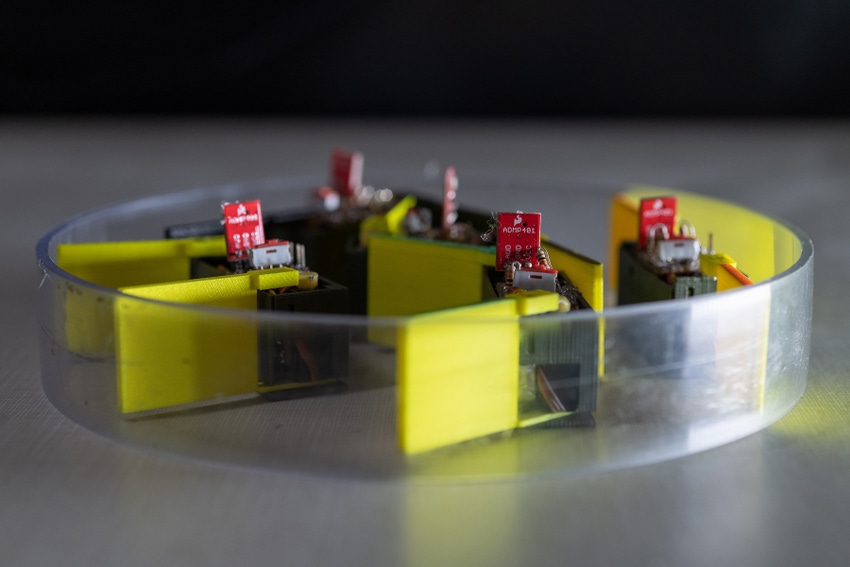Someday We May Make Robots Out Of Smaller Robots
New research from the Georgia Institute of Technology is pointing to a future where we may use simple robots as the components for more complex and highly-adaptable ones.
September 24, 2019

Think of all the components that go into a robot. Now imagine if all of those components could be replaced...by smaller robots.
Researchers from the Georgia Institute of Technology have developed tiny robots that they say could potentially unlock new locomotion techniques and new ways of developing robots. The results of their research were recently published in the journal Science Robotics.
|
On their own smarticles are rather simple robots, but they can interact with each other in a group to perform more complex functions. |
Called smart active particles (or “smarticles”), the small robots can't do much right now – they just flap their arms. But when these robots are joined in a group they can move as one unit. That unit can then also integrate a sensor to respond to sound or light or be controlled well enough to navigate a maze. And while these robots are pretty simple by any definition, Georgia tech says further research could lead to small robots that can move and change shape in such a way as to provide the building blocks for more complex machines.
“These are very rudimentary robots whose behavior is dominated by mechanics and the laws of physics,” Dan Goldman, a Dunn Family Professor in the School of Physics at the Georgia Institute of Technology, said. “We are not looking to put sophisticated control, sensing, and computation on them all. As robots become smaller and smaller we’ll have to use mechanics and physics principles to control them because they won’t have the level of computation and sensing we would need for conventional control.”
The vision for the smarticles came from Nick Gravish, a former Ph.D student at Georgia Tech, who observed that construction staples could form free-standing structures on their own when poured into a container and then having the container removed. This sparked the idea that perhaps a similar concept could be applied to robotics. “You could imagine making a robot in which you would tweak its geometric parameters a bit and what emerges is qualitatively new behaviors,” Goldman said.
RELATED ARTICLES:
The 3D-printed smarticles, which run on batteries and have motors, simple sensors, and some limited computing ability, can only change their location by interacting with each other while enclosed in a ring. Through their study the researchers found that they could control the movement of a unit of smarticles via such methods as using a photo sensor to command them to halt when hit by a beam of light. The robots unaffected by the light would then move the unit in the direction of the halted robot. Although the individual smarticles move around in a chaotic, unpredictable fashion, the whole robot can move in a way that is predictable and can be programmed with software.
The research was supported by the Army Research Office and the National Science Foundation. In future work, Goldman and his team are looking to create more complex interactions between the smarticles. “People have been interested in making a certain kind of swarm robots that are composed of other robots,” Goldman said. “These structures could be reconfigured on demand to meet specific needs by tweaking their geometry.”
The potential of robots that can adapt their shape makes them an attractive target for defense and military applications in particular. “Future Army unmanned systems and networks of systems are imagined to be capable of transforming their shape, modality, and function,” Sam Stanton, Program Manager of Complex Dynamics and Systems at the Army Research Office, said. “For example, a robotic swarm may someday be capable of moving to a river and then autonomously forming a structure to span the gap. Dan Goldman's research is identifying physical principles that may prove essential for engineering emergent behavior in future robot collectives as well as new understanding of fundamental tradeoffs in system performance, responsiveness, uncertainty, resiliency, and adaptivity.”
Chris Wiltz is a Senior Editor at Design News covering emerging technologies including AI, VR/AR, blockchain, and robotics.
About the Author(s)
You May Also Like


.jpg?width=300&auto=webp&quality=80&disable=upscale)

